Bombing tactics: "Blitzkrieg" system analysis on the basketball court
8:30pm, 31 May 2025Basketball
The bombardment tactic emphasizes the use of the opportunity from defense to offense, and create offensive opportunities by using the entire game space and transferring the ball across a large scale. From the Celtics in the 1960s, the Lakers in the 1980s and 1990s, to the Suns' "7-second fast attack" in the early 21st century, the subsequent Warriors' Five Small and the Pacers today, teams in different eras have used this tactic as a symbol, demonstrating their ultimate pursuit of offensive efficiency.
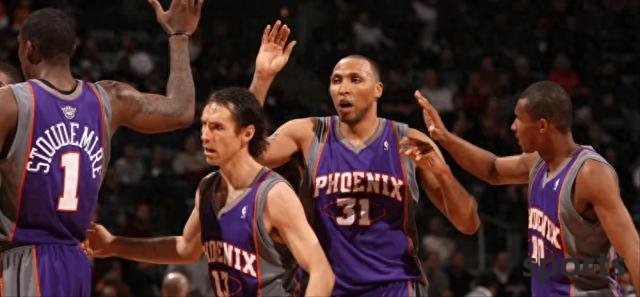
The bombardment method is mostly to hand the ball over to the team's key responders to deal with the ball, such as Nash in the Suns, the "Five Little Warriors"'s dream pursuit, and Halliburton of the Pacers. The bombardment tactic is a three-dimensional offensive system, which is composed of three waves of offensives in most cases: dribbling attack, receiving attack, and dragging back and rushing to the frame.
First wave: Dribble attack
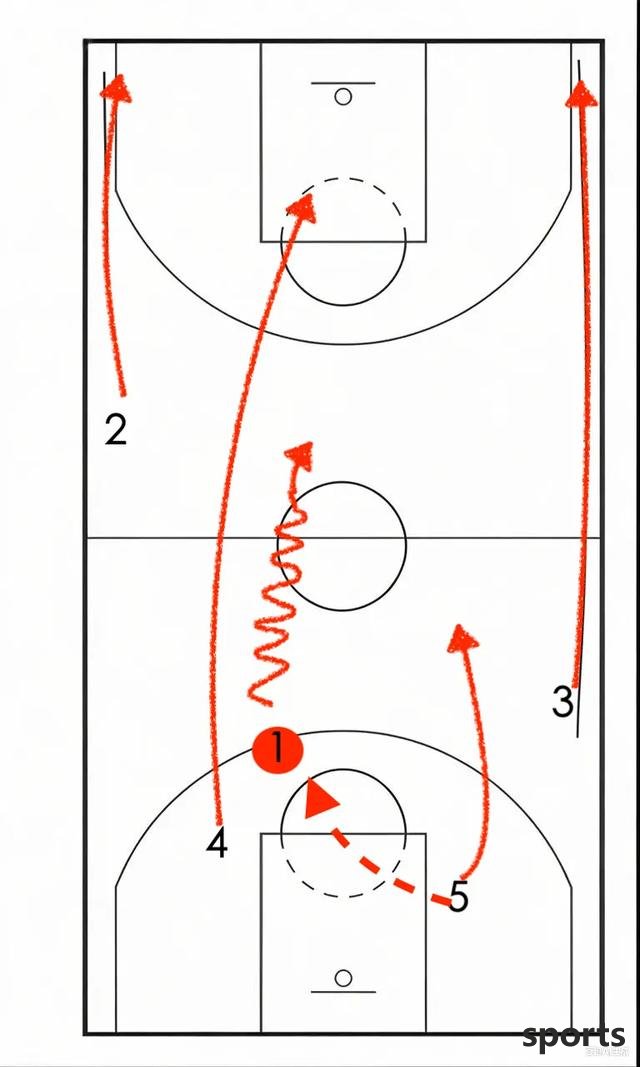
After player No. 5 grabbed the rebound, he immediately handed the ball to the key receiver No. 1 player. When competing for rebounds from No. 5, players No. 2 and No. 3 went down to the bottom corners on the left and right sides of the frontcourt to open up space, forming the first wave of attack opportunities. Players No. 4 followed up with players No. 2 and No. 3 and quickly went down the middle. Player No. 1 dribbles forward, while No. 5 follows.
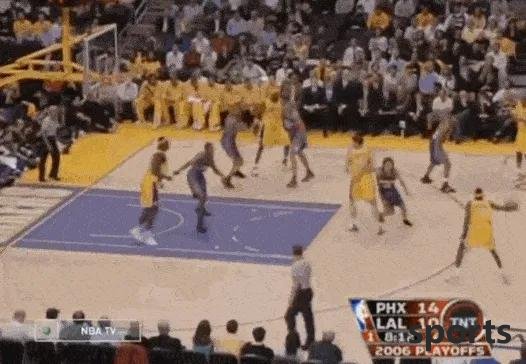
The above picture, after the Suns completed their defense, the ball was immediately handed over to Nash to dribble and push the ball, and hit a three-pointer.
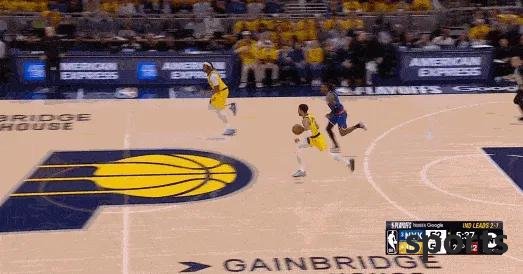
The Pacers served quickly, Halliburton immediately hit the frontcourt with the ball in the middle and immediately made a three-pointer shot.
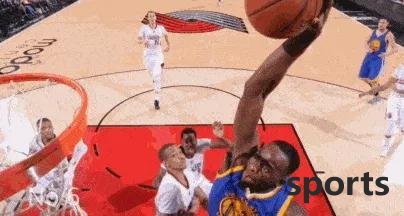
The Warriors completed the defense and got a rebound and ran to the attack box with a one-dunk. The above three cases are all made from the opportunity to defence to offense, and to seize the opportunity of the opponent retreating and preventing chaos. If there is no chance to dribble and attack, the players who get off in advance will be the second wave of offensive opportunities. The second wave: After the first wave of dribbling and attacking opportunity is blocked, the player who takes off in advance will be the second wave of attack opportunity.
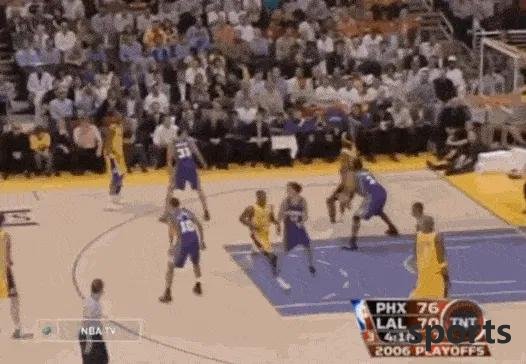
In the picture above, after Nash had no chance to dribble the ball, he immediately passed the ball to Barbosa who was getting off the ball quickly. Barbosa immediately launched an attack after receiving the ball.

The picture above, Halliburton quickly advanced and attacked. After finding Nesmith, the bottom corner, he decisively passed with a pass to assist the bottom corner with a three-pointer.
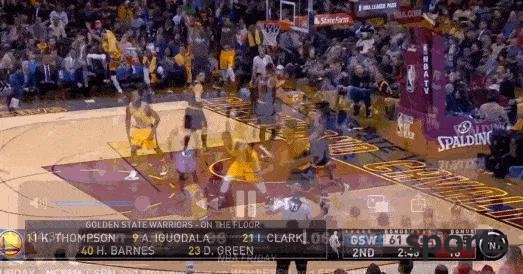
The above picture, after the Warriors completed the defense, Zhu Meng quickly advanced to find Curry in the frontcourt, and Curry made a three-pointer after receiving the ball. The third wave: The dribble in the first wave of dragging back and rushing back and there is no chance to attack, and the outside players who ambushed in advance have no chance to attack. Then the next step is the attack of dragging back and rushing back and rushing back.

The Jazz's dribble attack and the second wave of ambushing the left and right sides were all defended, Gobert, who was dragged behind, quickly followed up to the receiving and rushing the frame to complete the dunk.
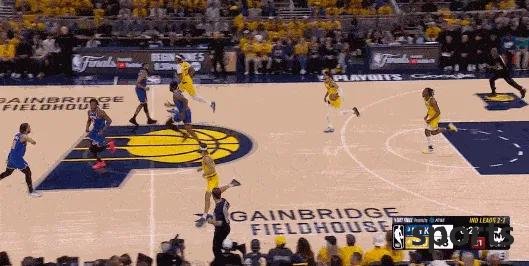
The middle of the three-wave attacks and after the three-wave attacks, many pick-and-roll opportunities will be generated. Similar to the picture above, between the second wave of the catch and the third wave of the drag and back attack box, ball holders Halliburton and Turner completed the pick and roll three-point shots after holding the ball at 45 degrees on the right.
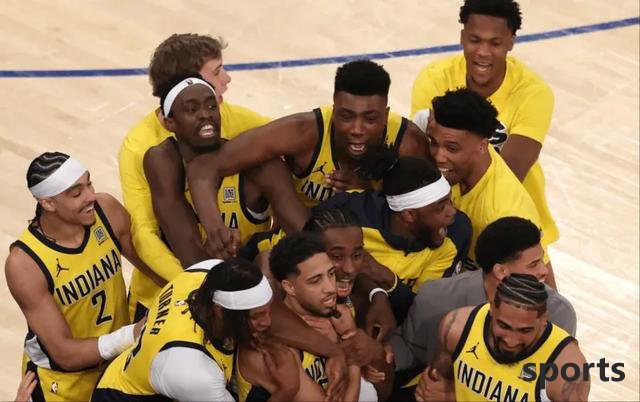
and above are just the most basic cooperation of bombardment tactics. While a three-dimensional attack was smooth and fast in one conversion round, the Pacers also added cover cooperation that is difficult to distinguish between true and false in each wave of attack. And this is also the reason why the Pacers can lead the Knicks with a big score. With the gunfire style, the Pacers played extremely excellent offensive data. In the first four games against the Knicks, the total score of the conversion was 106 points, while the Knicks had only 59 points. From the above, we can see that "bombardment" can be regarded as a "chasing and fighting" tactic. Seize the short-term chaos that is inevitable when the opponent retreats, launch a continuous multi-wave impact, and form a fast and multi-point maneuverable three-dimensional offensive.
tỷ số bóng đáRelated Posts
- Why 50 players withdraw from the draft? New NCAA regulations limit the NBA draft, and Yang Hansen makes a profit!
- Letter is absent! The Warriors lost unexpectedly, Rollins 32+8, Curry 27+6, Butler left the game frustrated
- Who has the best former teammate lineup in his career? (Tim Duncan)
- Yang Hansen: Eat well, drink well and sleep well in the next five days. I used myself in 2K to beat Chris and score 32 points.
- As strong as Curry, he was the No. 7 pick in the first round in 2009. Who is ahead of him? Many top talents
- Italian wing star will join Real Madrid next season, and the Jazz holds his NBA signing rights?
- Yang Hansen beats Wenban Yama! The draft rankings rose, and the Spurs led the six teams to chase them!
- What chips can the Lakers use to exchange for Adams and the White Devils?
- With Paul joining the Clippers, the Clippers next season have their own secret weapon lineup
